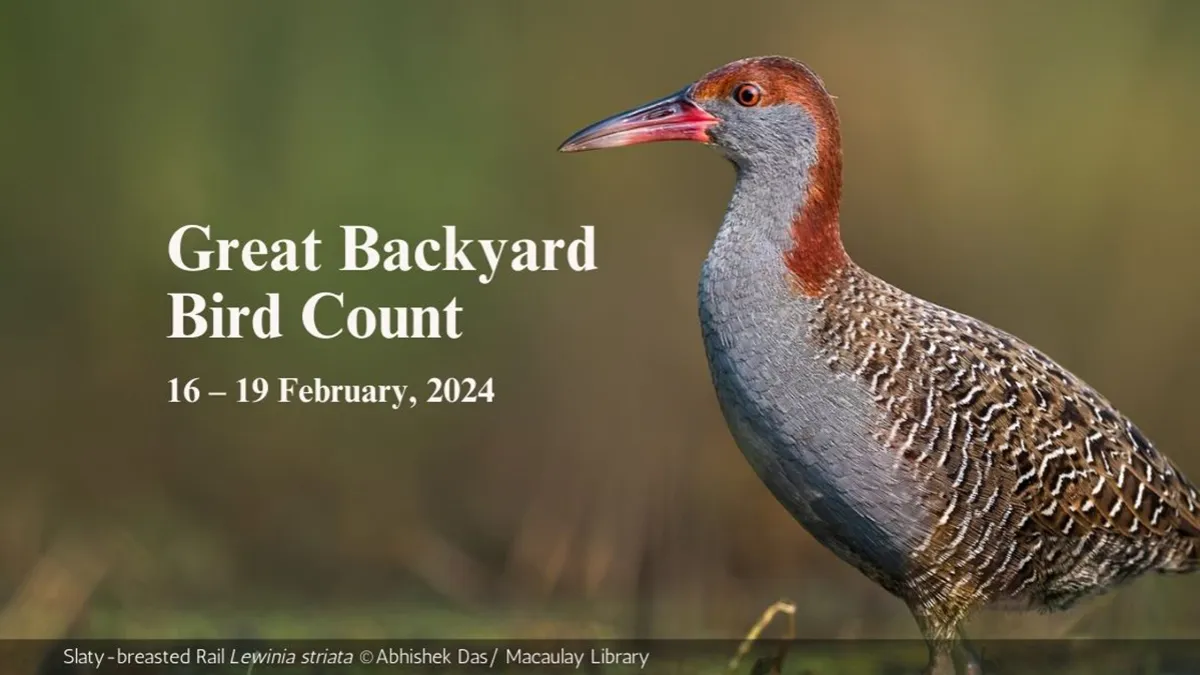Great Backyard Bird Count from February 16 to 19; bird watchers and environment lovers in Bengaluru are all set to participate
13 Feb 2024
News
Bird watchers and environment lovers in the city are preparing to participate in the Great Backyard Bird Count (GBBC), an annual bird-counting event coordinated by Cornell University and the Audubon Society in the USA, which is quickly approaching. The event, which is scheduled for February 16–19, is being organised in India by Bengaluru-based Bird Count India, a federation of birdwatching, environmental, and conservation NGOs from all around the country.
Every year more than lakh birdwatchers worldwide take part in the GBBC. Over a thousand birdwatchers are anticipated to gather in India for the occasion this year. In order to facilitate the production of checklists, participants are invited to write a note of every species of bird they observe at a specific site for at least 15 minutes at any point over the four days. This list may then be uploaded to the eBird bird recording platform.
India ranked third in the world in 2023 for the total number of species that have been recorded. The Himalayan Bulbul in the Himalayas, House Crow in the north and south, Red-vented Bulbul in the east and central areas, Feral Pigeon in the west, and Plume-toed Swift in the Andaman & Nicobar Islands were some of the most seen birds in India.
GBBC was first introduced in 1998 and expanded worldwide in 2013. According to Ms. Mohan, Bengaluru has had participants ever since it began. It was a little slow to take up at first. The level of reaction has improved with time. Bengaluru serving as Bird Count India's base has been beneficial. Here, we are in the centre of it all. The news is currently making its way throughout India," she says.
There will be participants in this year's tournament from 33 states and Union territories. Campuses all around India will participate in Campus Bird Count, a sister event of GBBC, which tracks bird populations on academic and institutional campuses, which are fast becoming essential habitats for wildlife.
